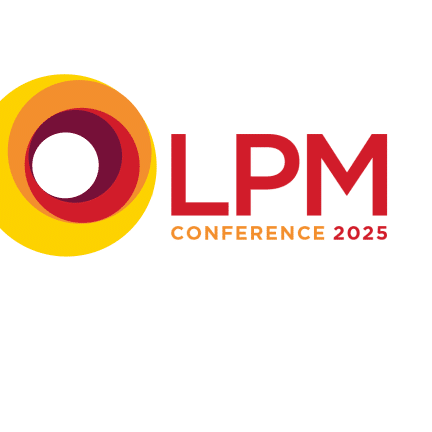
Are you always audit-ready?
Grant Sanders, practice manager and compliance officer at Stephen Rimmer, discusses how technology to centralise multiple compliance data points can really transform both the burden on teams and ultimate business outcomes
In the rapidly evolving legal landscape, the ability to swiftly adapt and leverage technology is crucial for maintaining competitive advantage and ensuring compliance. For compliance professionals in law firms, the challenge is twofold: ensuring adherence to stringent regulations while maintaining efficiency. Leveraging data through advanced software solutions has emerged as a pivotal strategy, offering a proactive approach that surpasses traditional methods like manual Excel spreadsheets. This shift not only streamlines operations but also delivers significant benefits in terms of time and cost, ultimately enhancing service quality for clients and operational efficiency for law firms.
From reactive to proactive
Historically, compliance teams have relied heavily on manual processes, particularly Excel spreadsheets, to track and manage regulatory requirements. While spreadsheets offer flexibility, they are often cumbersome, prone to errors, and reactive by nature. Teams spend substantial time entering, verifying, and cross-referencing data, leaving little room for proactive compliance management.
We are a high street SME law firm previously reliant on spreadsheets and manual data entry, which meant delay and the possibility for error in reporting. By adopting sophisticated data collection and compliance software, we have transformed our compliance operations. This has allowed us to capture more data while ensuring accuracy and consistency and provides real-time insight. With instant access to updated regulatory information and automated alerts for compliance deadlines or changes in regulations, we have shifted from a reactive to a proactive stance, addressing potential issues before they escalate.
From cumbersome legacy to ‘living audits’
At our firm, agility in adopting technology has consistently yielded enhanced client service and internal efficiencies. However, our journey towards transforming compliance processes has been the most significant and rewarding yet.
As the compliance officer for legal practice (COLP) and overseer of all compliance matters, managing the labour-intensive nature of compliance tasks was a formidable challenge. From conducting anti-money laundering (AML) risk assessments, which is often reduced to ticking boxes, to manual file audits representing only a fraction of total matters, the workload was daunting. Maintaining over 50 policies, preparing for accreditations like Lexcel, CQS, and ISO9001, along with financial and internal audits, privacy impact assessments, and data subject access requests (DSARs), seemed insurmountable.
A constant hamster wheel of compliance was not just a metaphor but a daily reality. Finding the time to streamline these legacy processes while maintaining them was a challenge that once seemed like it would take a decade to overhaul.
A turning point came in 2021 when I met Shak Ashraf, CEO and founder of Reg-1. Shak introduced what sounded like a RegTech miracle—an ecosystem that could centralise all our risk and compliance data points and tasks. Sceptical yet hopeful, I decided to embark on this transformative journey. Over the past two years, we’ve moved from the proof-of-concept phase to fine-tuning a platform that went live in February 2024. The impact was immediate and profound. Our policy management and audit functions have been revolutionised. We now operate with a centralised dashboard that not only simplifies updates and revisions but also provides a clear, real-time view of our compliance status relative to our regulatory obligations.
What once involved time-heavy preparations for compliance audits like Lexcel or ISO has been replaced by ‘living audits’ — an always audit-ready approach facilitated by our new platform. This change has not only released time, but also significantly improved our operational readiness and compliance posture.
The next exciting phase involves implementing real-time AML risk assessments and sanctions screening. With each step, we move closer to having a central nexus for all our compliance data points, thoroughly transforming how we manage risk and compliance and ensuring we remain at the forefront of industry standards.
A win-win for clients and firms
The benefits of leveraging compliance data through software are profound. Automation reduces the time spent on mundane data entry and validation tasks, allowing compliance professionals to redirect their focus to higher-value activities, such as strategic planning and risk assessment. This shift not only enhances job satisfaction but also boosts overall productivity.
For clients, the implications are equally significant. Reduced time spent on compliance translates directly into faster turnaround times fostering greater trust and long-term relationships.
Analytics for higher accuracy and lower risk
Manual data-handling is fraught with risks. Errors in data entry, outdated information, and missed compliance deadlines, can all lead to severe repercussions, including regulatory fines and reputational damage. By leveraging compliance data, it mitigates these risks through robust data-validation processes, automatic updates and comprehensive audit trails.
Moreover, these tools can often include analytics capabilities, allowing firms to identify patterns and trends that might indicate potential compliance issues, empowering them to address possible gaps proactively, and further safeguarding against compliance breaches.
In the fast-paced and highly regulated environment of law, leveraging data through advanced software solutions is no longer a luxury. It’s a necessity. For compliance professionals, this shift represents an opportunity to work more efficiently, proactively manage risks, and deliver greater value to clients. By embracing tools like Reg-1, firms can navigate the complexities of compliance with more ease and confidence, ensuring they remain competitive and compliant in an ever-changing regulatory landscape.
Our journey is a testament to the power of technology in transforming not just business practices but also the very fabric of how we operate and succeed in the legal sector. The future of law firm risk management lies in technology that can integrate, analyse, and interpret compliance data efficiently, and setting new standards for excellence.



